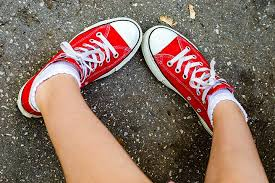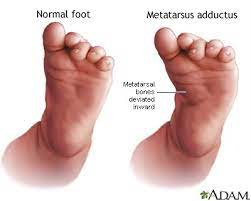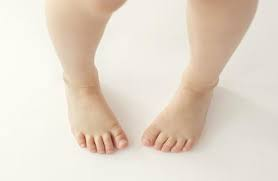Debunking Myths About Intoeing: What Parents Need to Know
Intoeing, commonly known as ‘pigeon-toed’, is a condition where the feet turn inward, a frequent observation in young children.
While it can be concerning for parents, intoeing is often a natural part of developmental growth, resolving on its own without medical intervention.
To offer you some piece of mind, we’ve put together this brief overview that provides key insights into the causes, progression, and when to seek professional advice for parents observing their children.
What is intoeing?
Intoeing, also known as walking pigeon-toed, is a common condition in which a child’s feet turn inward instead of pointing straight ahead while walking or standing.
It often occurs due to variations in the alignment of the bones, muscles, or ligaments in the legs and feet.
Intoeing can be caused by several factors, such as internal rotation of the hips, inward twisting of the shin bones, or a curved foot position. More on these common causes below.
What are the common causes of intoeing in children’s feet?
The causes of intoeing in children’s feet can vary and include the below:
- Internal rotation of the hips, known as femoral anteversion, is a common cause, especially in younger children.
- Tibial torsion, which is an inward twist of the shin bones, can also contribute to intoeing.
- Metatarsus adductus, a condition characterised by a curved foot shape, may be a factor also.
- Muscular tightness in the groups of muscle that rotate the legs in can be a cause as well.
These factors can result from a combination of genetic and developmental factors during a child’s growth and development.
How can I identify if my child is intoeing?
Parents can identify intoeing in their child by observing the way their child walks and stands.
If the child’s toes point inward instead of straight ahead, it may be an indication of intoeing.
Additionally, parents can look for any unusual gait patterns, such as tripping or stumbling frequently, or if the child appears to have difficulty with balance and coordination.
Can intoeing affect a child’s balance and coordination?
Yes, intoeing can potentially affect a child’s balance and coordination.
When the feet turn inward, it can alter the alignment and position of the legs, which may impact the child’s stability.
This altered alignment can make it challenging for the child to maintain a steady gait and may result in a slightly unsteady or clumsy walking pattern.
However, it’s important to note that the majority of children with intoeing can compensate well and adapt their movements to maintain overall functionality.
Can my child outgrow intoeing?
In most cases, intoeing is a condition that children will eventually outgrow as they continue to grow and develop with the appearance peaking at around ages 5-6.
As the child’s bones and muscles mature and the natural alignment of the legs and feet gradually improves, intoeing tends to resolve spontaneously over time.
It is crucial for parents to monitor the child’s progress and consult with a podiatrist if intoeing persists beyond the expected age of resolution or if it is accompanied by other concerning symptoms.
What are the potential complications of untreated intoeing?
In general, untreated intoeing does not lead to significant long-term complications or effects.
As we touched on earlier, most cases of intoeing resolve naturally as the child’s skeletal system matures. However, in rare instances, persistent or severe intoeing may contribute to gait abnormalities, foot pain, or difficulties with balance and coordination.
If intoeing is causing significant functional limitations or if it persists beyond the expected age of resolution, it is advisable to consult with a podiatrist for a comprehensive evaluation and appropriate management.
Are there any exercises or activities that can help correct intoeing?
There are certain exercises and activities that can help improve the alignment and function of the legs and feet in cases of intoeing.
Stretching exercises, such as gentle external rotation stretches for the hips and calf stretches for the legs, can be beneficial. Additionally, activities that promote balance, coordination, and muscle strengthening, such as swimming, cycling, or martial arts, may aid in the development of proper gait mechanics.
However, it is important to consult with a healthcare professional, such as a podiatrist or physical therapist, who can assess the child’s specific condition and provide appropriate exercise recommendations tailored to their needs.
How can podiatrists diagnose the underlying cause of intoeing in children?
Podiatrists can diagnose the underlying cause of intoeing in children through a combination of physical examination, medical history review, and sometimes imaging studies.
During the examination, the podiatrist will assess the child’s gait, foot alignment, and range of motion in the hips, knees, and feet. X-rays or other imaging studies may be ordered to evaluate the alignment of the bones and confirm or rule out any structural abnormalities that may be contributing to the intoeing.
Are there any treatment options available for severe cases of intoeing?
Treatment options for severe cases of intoeing are usually reserved for instances where functional limitations or persistent symptoms are present.
These may include:
- orthotic devices
- Exercise to reduce muscular tightness
- Gait training to help improve walking
- Changes of shoes
- In extreme cases surgery may be considered
What steps can I take?
While managing intoeing, parents can take steps to support their child’s development and overall foot health.
Encouraging regular physical activity and promoting a balanced diet can contribute to healthy bone and muscle development.
It is essential to ensure that the child wears well-fitted, supportive footwear that allows for proper foot alignment.
Regular check-ups with a podiatrist can help monitor the child’s progress, provide guidance on appropriate exercises or activities, and address any concerns or questions regarding intoeing or overall foot health.
We can help with kid’s feet at Hurst Podiatry
As you navigate the journey of your child’s growth and development, it’s essential to be well-informed and proactive about their health, especially when it comes to conditions like intoeing. Despite the myths and uncertainties surrounding this common pediatric condition, understanding its causes, progression, and potential implications is crucial for ensuring your child’s well-being.
If you’ve noticed your little one’s toes pointing inward or any changes in their gait, remember that intoeing is often a natural part of growing up and typically resolves with time. However, every child’s journey is unique, and being attentive to their individual needs is key. Monitoring their progress and being aware of when to seek professional advice can make all the difference in their development and confidence in each step they take.
Should concerns arise or if intoeing persists beyond the typical timeline, consulting with a specialised professional, like those at Hurst Podiatry, becomes an invaluable step. Their expertise in children’s foot health ensures that your child receives comprehensive care tailored to their needs, from diagnosis to treatment. So, if you’re in Melbourne and seeking guidance or treatment for intoeing or any other children’s foot issues, remember that Hurst Podiatry is here to support you and your child every step of the way. Don’t let myths or uncertainties hold you back; reach out and take the first step towards ensuring your child’s happy, healthy feet.
You can book in to see us by calling us on 03 8799 4426 for our Kilsyth clinic, 03 5901 2216 for Healesville, or booking online here.






